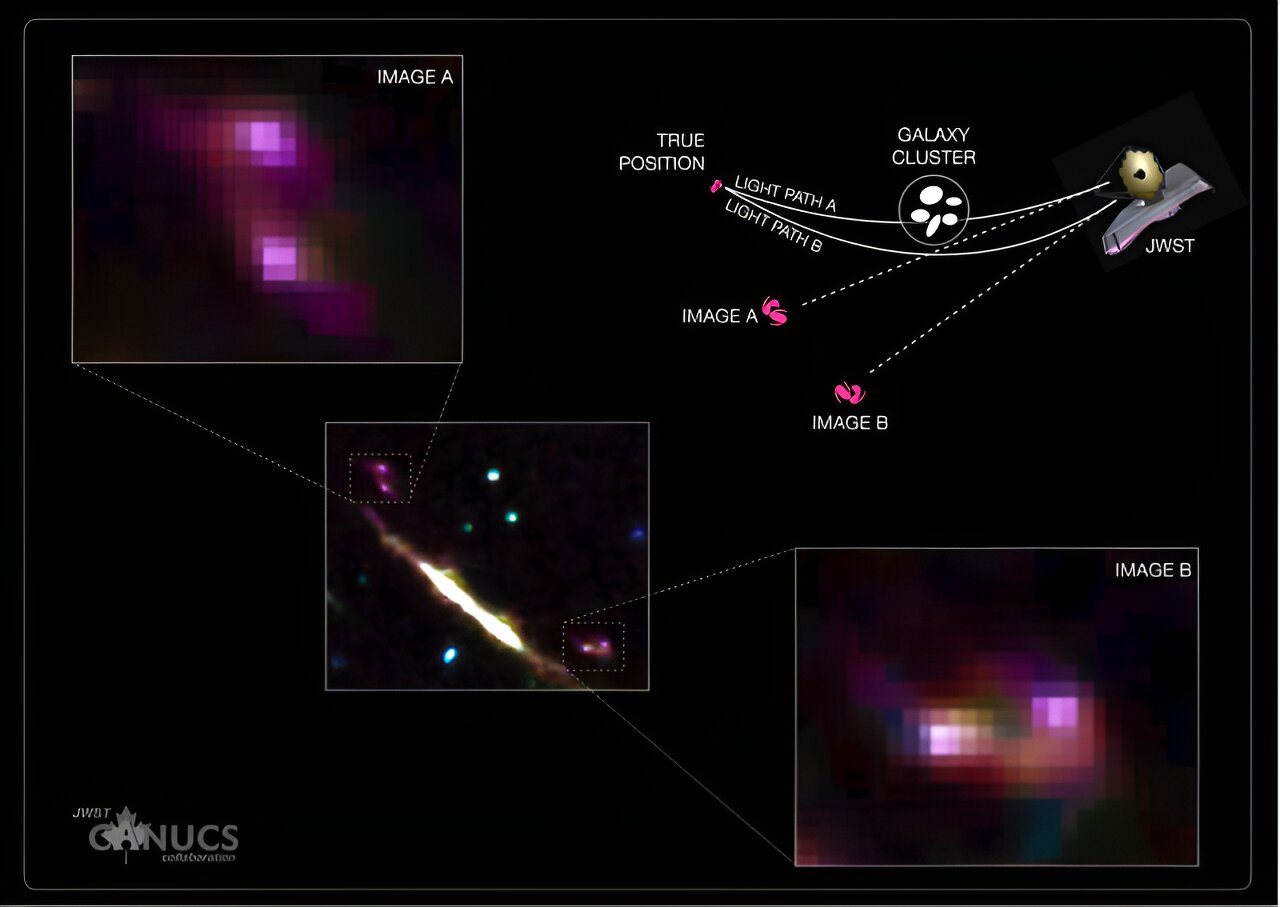Scientists have theorized how galaxies evolve, but details in their early phase of formation remained shrouded in celestial clouds of mystery.
An international team, including Kyoto University and Saint Mary’s University, has now discovered a baby galaxy made possible through the lens of the James Webb Space Telescope or JWST.
This baby galaxy shows evidence that its intensive growth is the result of a merging event of two smaller galaxies assembled early in the history of our universe.
These two smaller galaxies, dubbed as ELG1 and ELG2, can also be seen in the JWST images, helping the team better understand how galaxies form.
“Because of Einstein’s gravitational lensing or warping effect applied through the JWST, we can see the galaxy twice, like a desert mirage, because light reaches us from two slightly different directions,” says Marcin Sawicki at Saint Mary’s University in Nova Scotia.
2023-09-28 11:24:02
Link from phys.org



















